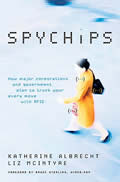"TAKING
THE RED PILL"
THE
REAL MATRIX
PART 13
By Professor
Steven Yates
August 16, 2014
NewsWithViews.com
Part 13: Weaponized Terms and Official Narratives
“The Matrix is a system, Neo. That system is our enemy. But when you're inside, you look around. What do you see? Business people, teachers, lawyers, carpenters. The very minds of the people we are trying to save. But until we do, these people are still a part of that system, and that makes them our enemy.... You have to understand, most of these people are not ready to be unplugged. And many of them are so inert, so hopelessly dependent on the system, that they will fight to protect it.” ~Morpheus, The Matrix
[Author's note: recent weeks have seen the appearance of attack-dog articles, e.g., this hit piece on “conspiracy theories” that appeared in Newsweek, or this wretched screed against Austrian school economics on Bloomberg.com. Their authors' certainty that supporters of such are deluded fools or worse is exceeded only by the paucity of the arguments presented. Clearly, neither author read or spoke to anyone who advocates the ideas attacked. But these articles do offer a gold-mine of examples for those interested in how language is used to caricature or mislead. The one on “conspiracy theories,” however, can applauded for its back-handed honesty on one point: “conspiratorial thinking” easily begins by questioning a government account. The author quotes an “expert”: “One of the most common ways of introducing a conspiracy theory is to 'just ask questions' about an official account.... It's a quite powerful rhetorical tool because it doesn't require any content, just the introduction of doubt about an official story.”
In other words, you're not supposed to question “your” government. You are supposed to suspend your critical thinking skills and accept its pronouncements on its own authority.
There is even an imitation-Wikipedia site, calling itself “Rationalwiki” [sic.], with an entry on—are you sitting down?—“JAQing off”! “JAQing” stands for “just asking questions,” verbally invoking a not-exactly-subliminal image of a certain personal sex act. One would think adults to be above such crudities, but when comfort zones and worldviews are at stake, I suppose not.
It is as if someone—maybe more than one someone who identifies with power—is very worried about the number of people out here in the boonies who are “unplugging,” or at least paying attention to those “just asking questions.” Some obviously well educated and articulate folks have now “taken the red pill,” awakened in the Desert of the Real, and are trying to awaken others before the roof caves in.
In case this continuing series falls into the hands of the exceptionally dense as did its ancestor in a few cases, I trust it is clear to adult readers that I am using phrases like Real Matrix and Desert of the Real allegorically. If you don't know what an allegory is, look it up. I mention this because an idiot where I used to live once posted an online criticism of me that opined: Yates “believes the Matrix is real.” I'm not joking.]
Friday, November 22, 1963 was a bleak day for the country. On that day, of course, President John F. Kennedy was assassinated as he rode in a motorcade in Dallas. John Connally, riding in the same vehicle, was also injured in the attack.
Lee Harvey Oswald was arrested in a nearby theater. He denied shooting Kennedy and claimed to have been a patsy.
Two days later, while Oswald was about to be taken from police headquarters to the county jail, Dallas nightclub owner Jack Ruby make his way through the assembled crowd and and shot him at point blank range in front of TV cameras. Oswald was dead at the scene.
The Warren Commission Report contended after a year-long inquiry that Oswald had acted alone. But doubts had already surfaced, and would continue. Some alleged that Kennedy had made powerful enemies in the CIA and the FBI—as he'd begun thawing the Cold War, trying to open up a dialogue with the Soviets. He'd nixed an infamous scheme called Operation Northwoods: a series of would-have-been false flag events to be blamed on Cuba, as the pretext for an invasion to bring down Castro's regime.
Others looked at the Federal Reserve. Allegedly, Kennedy had signed an executive order (EO 11110) that would have replaced Federal Reserve Notes with Silver Certificates issued by the government, although this interpretation of that order is dubious. Kennedy had spoken out against “secret societies”—or so we are told by some (again, one can question that interpretation of this infamous speech)—or perhaps we should listen to this one from earlier in 1963 which surely angered the higher powers in what Eisenhower had called the military-industrial complex.
Still others have trained suspicious eyes on Kennedy's successor, Lyndon B. Johnson. Johnson hated the Kennedys. The feeling was mutual. The only reason Johnson had been on the 1960 ballot was to win Texas for the Democrats. Johnson wanted to be President, so he'd accepted the arrangement. Would he have masterminded a highly visible assassination of a popular president knowing the devastating (not just to himself but to the country) consequences if he was found out?
I don't know. I don't consider the Kennedy assassination to be in the purview of my expertise. I was six years old, and hardly in a position to follow the discussions and controversies which ensued. I do recall it was the first time I saw my mother cry. An intelligent woman who gave me books to read in my childhood and introduced me to the world of current events, she would tell me late in her life that as far as she was concerned, Kennedy was the last statesman to occupy that office.
I grew up aware that something terrible had happened to the very fabric of the country that day, and that a few stubborn voices alleged that there was more to the story than government and mainstream media were allowing. Some based their claims on the idea that the purported trajectory of the “magic bullet” that allegedly came from a sixth floor window, killed Kennedy, and then wounded Connolly would have violated the laws of physics, and that autopsy details were covered up to protect an official story. There were added allegations that Oswald was not a good enough shot to have taken out Kennedy from that far away, and that he had been seen elsewhere at the time of the shooting, meaning that (unless he could be in two places at once) he couldn't have been the shooter.
Nothing has been proven decisively. But the phrase “conspiracy theory” crept into the public lexicon—to become what is now being described as a weaponized term—a phrase used to discredit a priori, without the perceived need for a rational response. The trained philosopher in me became fascinated some years ago with how language can be used to communicate information or to misdirect, mislead, bully, and control.
For starters, historian Richard Hofstadter's influential essay “The Paranoid Style in American Politics” appeared almost exactly one year after the Kennedy Assassination, alongside the Warren Commission Report. Hofstadter's weaponized term was paranoid style rather than conspiracy theory. Among his targets were the Goldwater movement and the John Birch Society. He also discussed McCarthyism and anti-Catholicism. His title was prescient. If you are associated with any of these, you are “paranoid,” i.e., suffering from mild mental derangement. Diagnosis and healing are called for. Rational response is not. With this essay, required reading for those seeking to understand how the Real Matrix got programmed, Hofstadter set a precedent.
Not as well known is that the CIA had began using the phrase conspiracy theory. It's 1035-960 document dated 1 April 1967 was sent exclusively to top mainstream media outlets. This document was obtainable through FOIA requests but not released to the public until 1996. It decried skepticism about the official version of President Kennedy's death. It went on to complain that “[c]onspiracy theories have frequently thrown suspicion on our organization, for example by falsely alleging that Lee Harvey Oswald worked for us. The aim of this dispatch is to provide material countering and discrediting the claims of conspiracy theorists …” It recommended “employ[ing] propaganda assets to answer and refute the attacks of the critics [of the Warren Commission Report].”
Mass media began using the term. It stuck, and indeed made a formidable weapon, one hard to defend against—even as similar allegations appeared following other tragic events of that decade. For example, there are claims that government accounts of the assassinations of Robert F. Kennedy and Martin Luther King, Jr. do not fit reports by eye-witnesses. Sirhan Sirhan—possibly drugged and mind-controlled—had no memory of any shooting. James Earl Ray confessed, but retracted his confession and consistently denied shooting King up to his death in prison from liver disease in 1998. Ray, we should make clear, was a criminal with a substantial track record, and on the lam at the time of the shooting; but this isn't proof he killed King. Why he initially confessed isn't clear, but today, even surviving members of the King family have doubts about his guilt.
Some conspiracy claims have turned out to be uncontroversially true. Their place in history is such that no one calls them that. Watergate is the obvious case. Then there was Iran-Contra in the 1980s. Claims that did not make headlines involved a CIA project known as MK-Ultra. This project experimented with LSD and mind control. The official claim is that MK-Ultra was discontinued long ago. Others aren't so sure.
In 1995, allegations surfaced rather quickly that there were problems with the official account of the Oklahoma City Bombing. They ranged from the claim that a truck bomb couldn't have caused the level of damage sustained by the Murrah Federal Building, that BATF officials who had an office in the building were mysteriously not at work that day, implying that someone had tipped them off, that witnesses had heard two explosions which were also recorded by seismographs at the University of Oklahoma, and so on. Federal officials have videos which survived the bombing and would show McVeigh exiting the Ryder truck, and also reveal whether he was alone or in the company of others. They refuse to release this material. I've summarized the issues here.
By this time we had the Internet, of course. Internet-based media would prove its worth when Drudge broke the Monica Lewinsky story which mainstream media had spiked, as it had largely spiked Bill Clinton's dalliances with and sometimes abuses of other women. Once these were exposed, the silence of radical feminists was damning to that movement, which was about ideology, not justice for women.
These all predated the 9/11 attacks, by any measure a turning point. I am not concerned to sort out whose theories are most likely true, and I am not going to recount the difficulties (logistic, physical, etc.) with the official narrative that the federal government and mainstream media almost immediately put in place. This has been adequately done by others—and it is worth noting that many who have studied the best first hand accounts of what happened that morning became 9/11 skeptics (a word I prefer to the weaponized term truthers).
What I am interested in is the fact of an official narrative in all these cases. An official narrative is an account of some dramatic event, be it an assassination or bombing or mass shooting, sanctioned by government, loyally reported by mainstream media, usually over and over because repetition is known to cement a narrative in the minds of listeners. Weaponized terms are then employed to protect it from questions and criticism.
That Oswald, a lone gunman with a grudge, shot Kennedy from that sixth floor window, is then the official narrative of the 1963 assassination. That Sirhan Sirhan, another loner, shot his brother five years later; and that James Earl Ray murdered King, are the official narratives of those events. The same is true for Timothy McVeigh and Terry Nichols regarding the Oklahoma City Bombing; Osama bin Laden having masterminded the attacks on the World Trade Center and the Pentagon from a cave somewhere in Afghanistan whereby 19 Saudis with boxcutters hijacked four planes that morning; and Obama having masterminded the Navy Seals assault on a compound in Pakistan where bin Laden was said to be hiding, taking him out on May 2, 2011 followed by his burial at sea—a sequence of events for which there are no surviving witnesses who saw a body or other physical evidence, and in which again there are eye-witnesses who have a quite different account of what happened.
We can isolate official narratives for other recent events: the so-called Batman shooter in the theater in Aurora, Colo. (called that because it occurred on the opening night of a Batman movie), the accused being a former Ph.D. student named James Holmes; the Sandy Hook Elementary School case in Newtown, Conn., where we are told that the shooter was a 20-year-old Aspergers sufferer named Adam Lanza; and the Boston Marathon Bombing, following which an entire city was placed under de facto martial law while militarized law enforcement tracked down 19-year-old Dzhokhar Tsarnaev, whose older brother had been killed amidst a flurry of conflicting and self-contradictory reports.
In each of these cases there are factors and details that to an alert mind, do not add up. For example, in the case of the Batman shooter, police learned (from Holmes himself) that Holmes's apartment had been booby-trapped with explosives—some quite advanced and with major destructive power, for example a trip wire set to unleash an explosion when the front door was opened. Somehow he'd obtained close to $20,000 worth of equipment. It took a crew most of one day to use robots to disarm them sufficiently to gain access to Holmes's apartment—after which they detonated the building, conveniently destroying all possibility of follow-up on-the-scenes investigation by independent researchers.
How credible is it that James Holmes, a Ph.D. student in the process of withdrawing from his program at the University of Colorado's medical school, planned and carried out these shootings?
I was once a Ph.D. student and can certify—countless graduate students would back me up on this point, I imagine—Ph.D. students are notoriously poor. So where does this Ph.D. student obtain between $15,000 and $20,000 both for the gear he allegedly was wearing when he did the shooting and the devices used to booby-trap his apartment? Holmes's subject was neuroscience. Where did he get the skills necessary to pull off a stunt like this?
Moreover: what could have been his motive? Those who knew him did not report any grievances he supposedly harbored, or any special interest in politics. A person doesn't just wake up one day and decide he is going to wire his apartment with explosives and go on a shooting spree targeting strangers in a theater. No one has ever suggested a credible motive for the heinous act attributed to Holmes. To say that he was crazy isn't an answer, because even the behavior of so-called crazy people is subject to cause and effect. A few have pointed to his father, Robert Holmes, a mathematical genius with a Ph.D. in statistics. The senior Holmes had developed predictive models for the global banking community based on some of the most sophisticated computer algorithms ever devised. One result is that he allegedly had the know-how to trace trillions of dollars that had simply disappeared, to the point of being able to locate their present account-holders. This made him potentially very dangerous! It was rumored that he was on the list of possible witnesses to be called to testify about the LIBOR scandal before a U.S. Senate committee. To the best of my knowledge, he never has testified. Was he told something along the lines of, “You keep quiet, and we'll see to it that your kid's life is spared”? We don't know, of course, but what are the odds of all this being coincidental?
Adam Lanza's father, Peter Lanza, was also involved with the global financial corporatist octopus that is strangling the Anglo-European world. Coincidence on top of coincidence?
I'm “just asking questions,” of course—reasonable when we have official narratives that don't add up to anything that makes rational sense. So what is the reality in these cases? Again, I don't know, and I'm not sure anyone else does, either—except whichever sociopaths planned these events and carried them out. As those who saw the coverage know, James Holmes was found by police sitting in his vehicle in a daze, in which he seemed to remained long afterwards, making the (by now familiar) claim of not remembering anything and wondering what he was doing in jail.
Regarding the Sandy Hook case, a long-time school safety consultant, educator, and one-time law enforcement officer named Wolfgang Halbig began his own investigation after offering assistance as an authority on school safety and quickly sensing something amiss. His list of questions is telling. These should be easily answerable from publicly available records if that event happened as the official narrative says it did. Halbig now contends he has in his possession 11,000 pages of documentation, courtesy of Connecticut state troopers who for obvious reasons chose to remain anonymous, proving beyond all reasonable doubt that Sandy Hook was a scripted event. Why would anyone do such a thing? We find the answer in that Connecticut now has one of the most restrictive gun control laws on the books, and has threatened to turn tens of thousands of gun owners into felons for refusing to register or turn in their firearms. These and other shootings, some real and others possibly scripted, have enabled gun-grabbers to gain ground.
We've discussed weaponized terms. Another ruse to sabotage skepticism towards official narratives is to link evidence-based questioning to outrageous claims and clearly irrational postures. Some of these are easily exposed, e.g., the forum troll who retorts to a questioner of, e.g., the official 9/11 narrative, if he also believes the moon landings were faked. Note that the retort is unrelated to the topic at hand. This is a dead giveaway that one is dealing with a troll. There is solid evidence that some of these people are paid by the government to post sarcastic comments on forums and blogs, or otherwise disrupt online discussions of controversial events.
The problem is occasionally larger than someone simply being disruptive. One can find authors, both online and in print, whose articles and even books weave elaborate tales of, e.g., reptilian space aliens disguised as humans, or of how holograms were used to simulate planes hitting the Twin Towers. One suspects that some of these people—I won't name names—are paid disinformation artists whose purpose is to make independent investigation look foolish through guilt by association, or possibly just to further confuse a public that doesn't know what to believe. The point is, investigators not tied to government or corporate media are questioning official narratives presented by government to explain or account for numerous recent events, going back at least to the Kennedy Assassination up to Sandy Hook, which don't add up for specific, concrete reasons. The questioners typically don't have a specific theory, and aren't pointing fingers at a specific group—aside, of course, from implying that someone in or close to government has something to hide, and that mainstream media is covering for them. Surprise, surprise.
In a few cases, actual threats have ensued when a questionioner kept pushing. Wolfgang Halbig reports that he received visits from government officials threatening him with felony charges if he didn't cease and desist. He has pressed ahead, encountered stonewalling and even physical bullying in Newtown, Conn.; although no charges have been filed against him, at least not yet. Halbig has credibility, of course, and the publicity a court battle might generate would be more difficult to contain than skepticism about an official narrative.
These narratives seem intended to further goals within the Desert of the Real (e.g., disarming the citizenry) at a time when the Real Matrix is coming under increased strain due to the ready availability of uncensored and unvetted information on the Web. The majority still take official narratives for granted, of course. A rising minority does not. This minority has been able to wrap its collective brain around the idea that those with real power really are sociopaths who have no qualms about murdering thousands of people in order to wage war and work towards global tyranny. This minority and its influence must be neutered. Hence weaponized terms, which paralyze people. Who, after all, wants to be branded as paranoid, or as a “kook”? Other terms I often see are “right wing nut job” (often abbreviated RWNJ), or just “wing nut,” “teabagger,” or the more menacing “domestic terrorist,” “domestic extremist,” or “anti-government hate group,” favorites of the far left Southern Poverty Law Center whom mainstream writers often cite as if it were an objective, nonpartisan authority. Seldom do I see such hate-filled language applied to leftists.
In fact, the few academics with tenure who have undertaken the kinds of studies suggested here—studies in how media in particular are used to entrench an official narrative in the minds of television viewers while offering alternative accounts—find themselves in fights to keep their jobs. Ask Professor James F. Tracy, of Florida International University, whose speciality is media manipulation and whose questioning of several official narratives brought down on his head the wrath of those “dependent on the system and willing to fight to protect it.”
|
|
This all aligns with how official narratives, whether of such events as a 9/11 or of the larger movements of history or of the general worldview on which much of contemporary science and scholarship rests, are kept in place in a corporatist political economy. Most of those defending various aspects of this worldview cannot even identify it clearly, much less supply cogent arguments in its defense. They assume it, and will invoke generalities about “rationality,” a concept about which philosophers are far from agreeing. The problem: complex physical evidence can be organized in different ways, and point one's reasoning in more than one direction, depending on (usually unstated) philosophical assumptions. We will see how this has affected the overall worldview of Western civilization that underwrites the corporatist Real Matrix and the damage it has caused in the Desert of the Real.
Next: The Materialist Matrix.
Click here for part -----> 1, 2, 3, 4, 5, 6, 7, 8, 9, 10, 11, 12, 13, 14,
� 2014 Steven Yates - All Rights Reserved
Steven Yates has a doctorate in philosophy and currently lives in Santiago, Chile. He is the author of Four Cardinal Errors: Reasons for the Decline of the American Republic (Brush Fire Press International, 2011). He also owns an editing business, Final Draft Editing Service.
Steven Yates's new ebook is entitled: Philosophy Is Not Dead: A Vision of the Discipline's Future.
E-Mail: freeyourmindinsc@yahoo.com




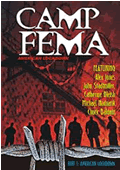

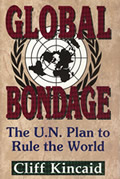

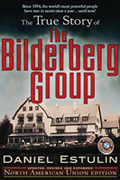

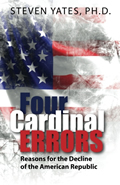




 Share
This Article
Share
This Article


